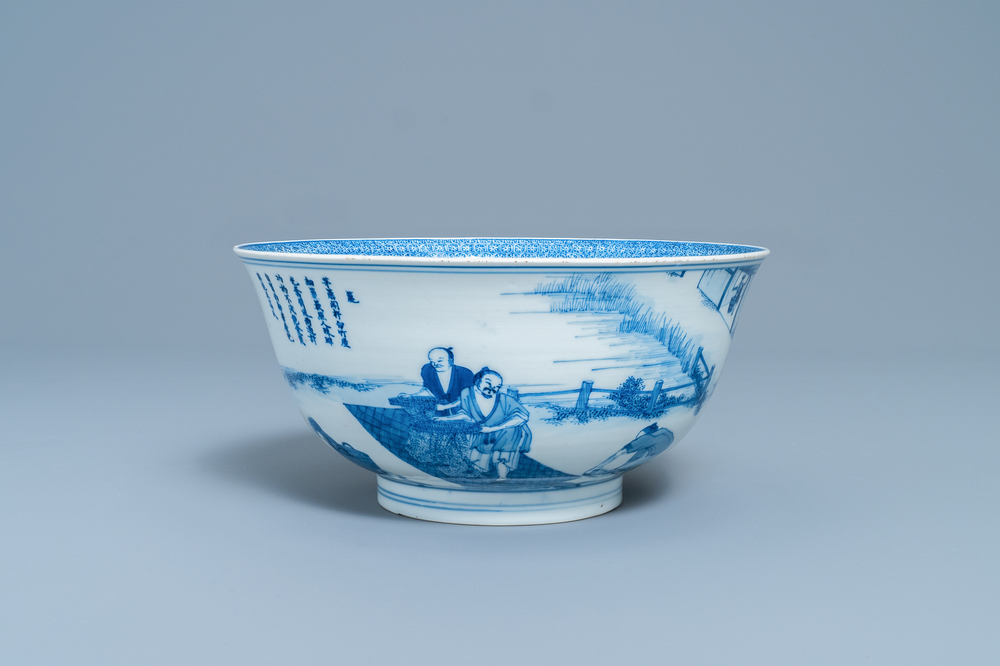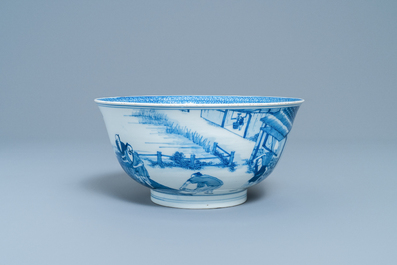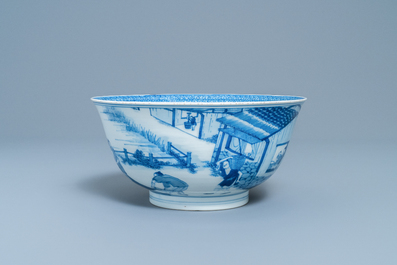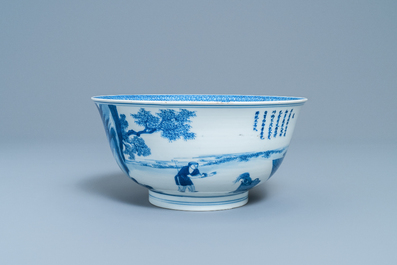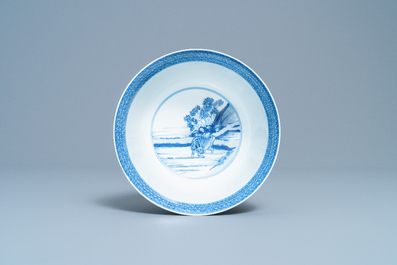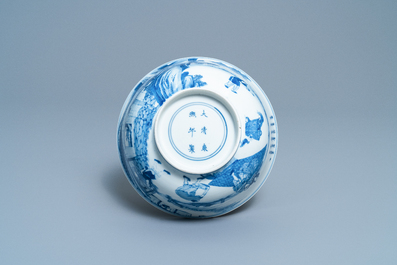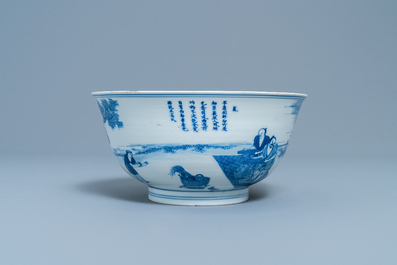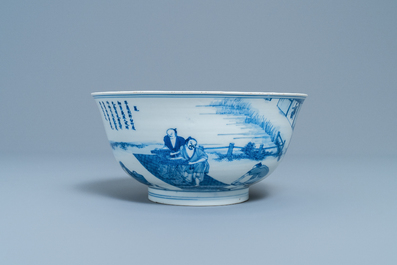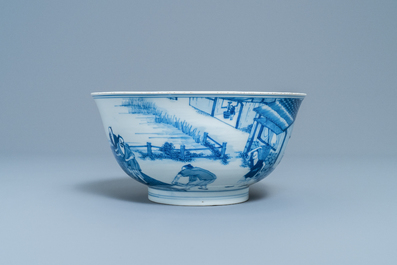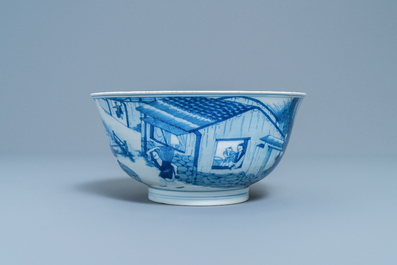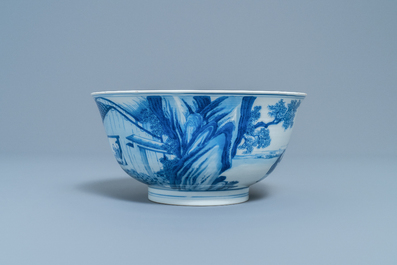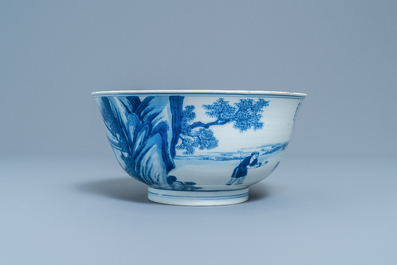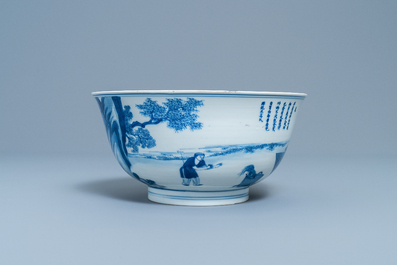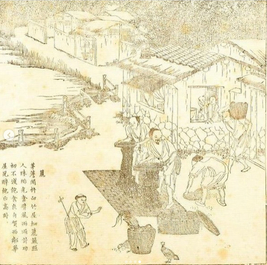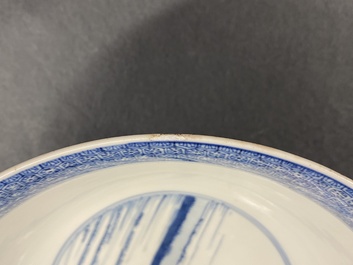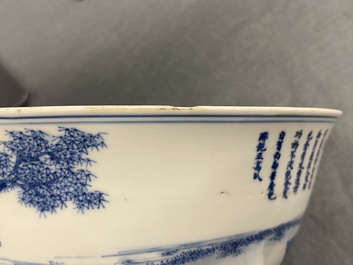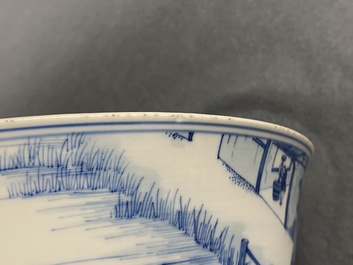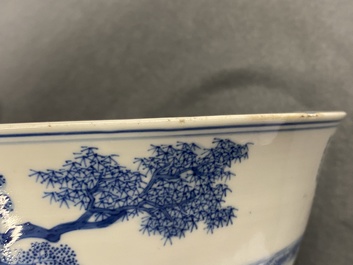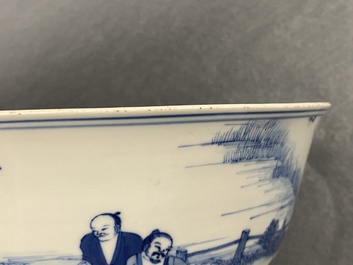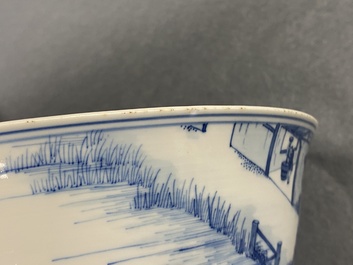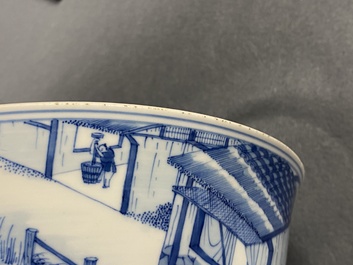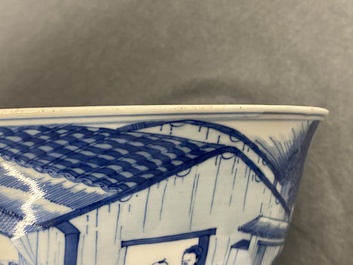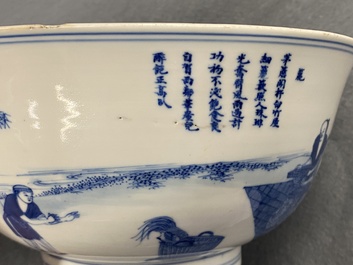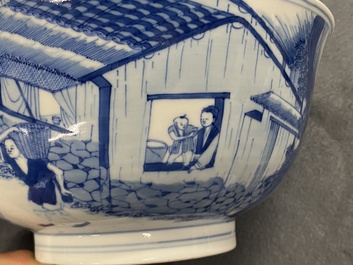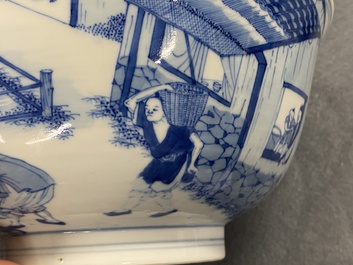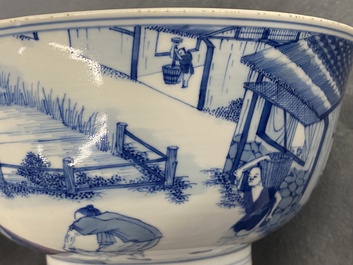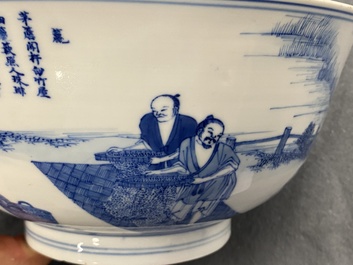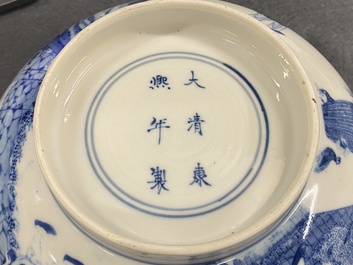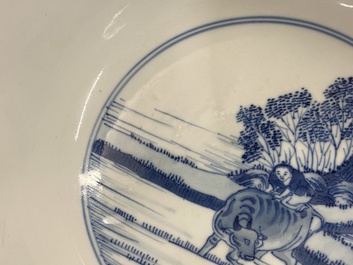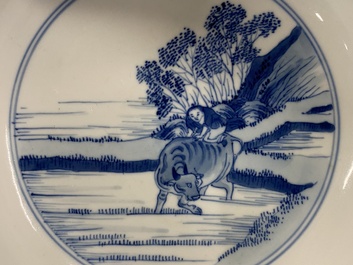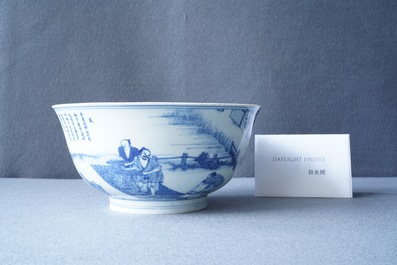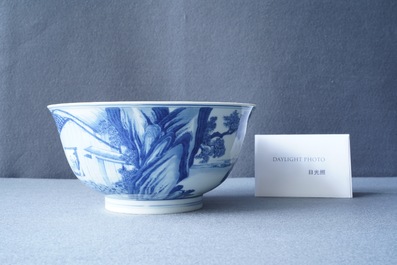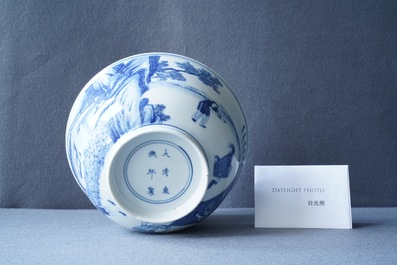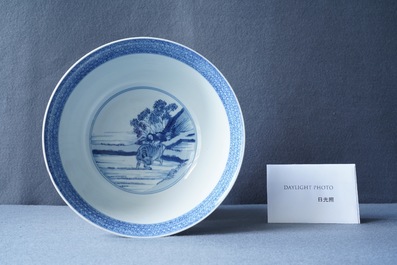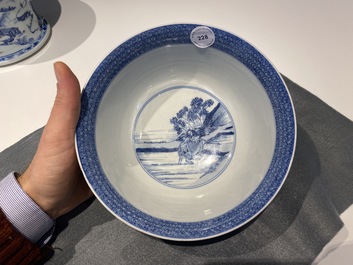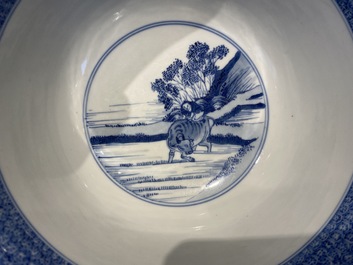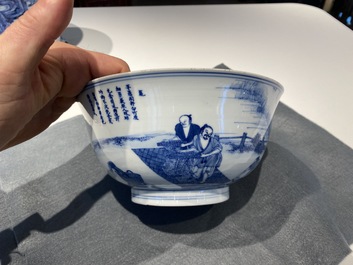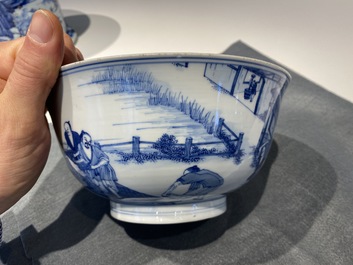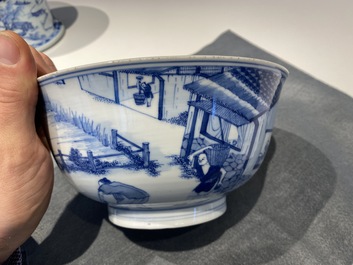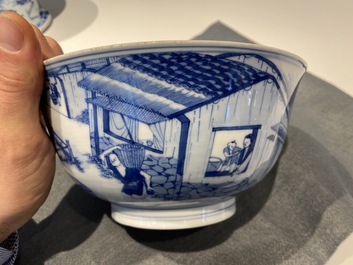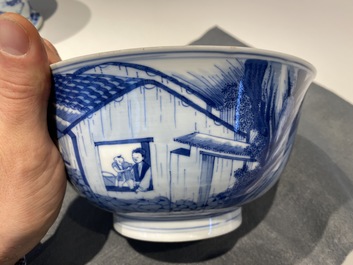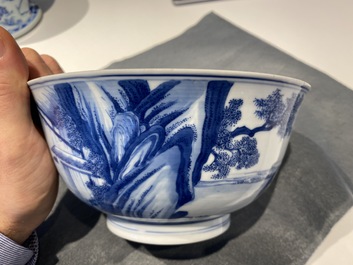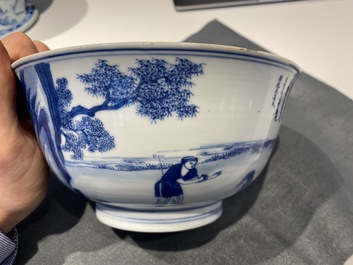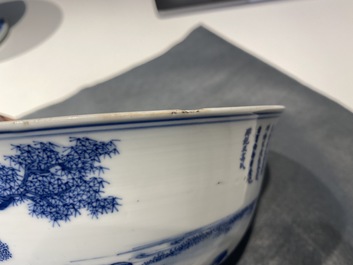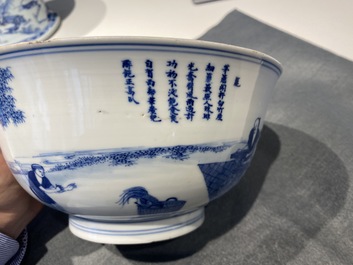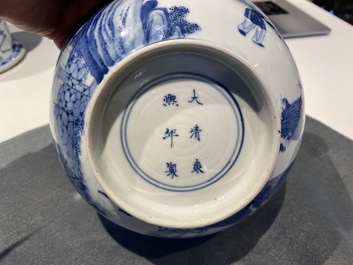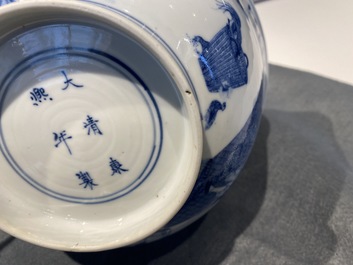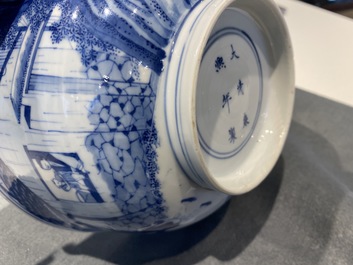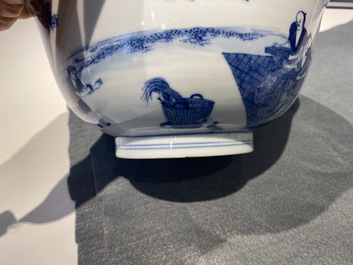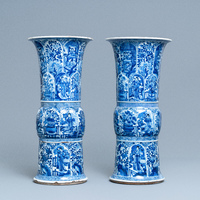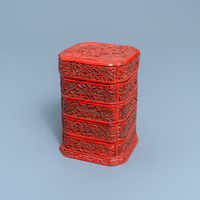We have to double-check your registration and make sure this is not an automated entry in our system. Please complete the test below...
An imperial Chinese blue and white 'rice production' bowl, Kangxi mark and of the period
Dia.: 20,3 cm - H.: 10 cm
Provenance:
- A Dutch private collection.
- Acquired from Feng Chun Ma art consultancy.
Condition: (UV-checked)
- Generally in very good condition.
- A superficial ca. 9 mm chip on the upper rim.
- A superficial ca. 2 mm chip on the outer rim and another of ca. 1 mm.
- The rim with a number of small black baking-related spots.
- A small number of negligible minor baking flaws throughout.
Painted on the exterior with a rice production scene showing farmers sieving rice, while a boy is trying to prevent cockerels from picking grain from a basket. A lady and a boy are watching from the window in a house. In the distance a figure in a thatched hut pounds grain in a large mortar. The scene is divided by large rocks and inscribed with a poem relating to this specific scene. The interior is painted with a central medallion enclosing a farmer and buffalo tilling the fields.
This bowl belongs to a very rare series of blue and white bowls with scenes of rice and silk production derived from the album ‘Yuzhi gengzhitu’ or' 'Imperially Commissioned Pictures of Tilling and Weaving', commissioned by the Kangxi emperor and designed by the court painter Jiao Bingzhen, to serve as a model for prints and paintings. The print with this specific scene is number 19 of 23. The print shown here is one from the Murray Warner Collection of Oriental Art in the Jordan Schitzer museum of Art, University of Oregon.
Only a few bowls from this series are known. One is in the Shanghai Museum and another in the Palace Museum, Beijing, and one was sold at Sotheby’s New York, 20th March 2019, lot 752 (link)
As the four known examples, including the present bowl from this rare group, are all painted with different scenes, it is very likely that there exists only one series, probably painted by the same artist.
